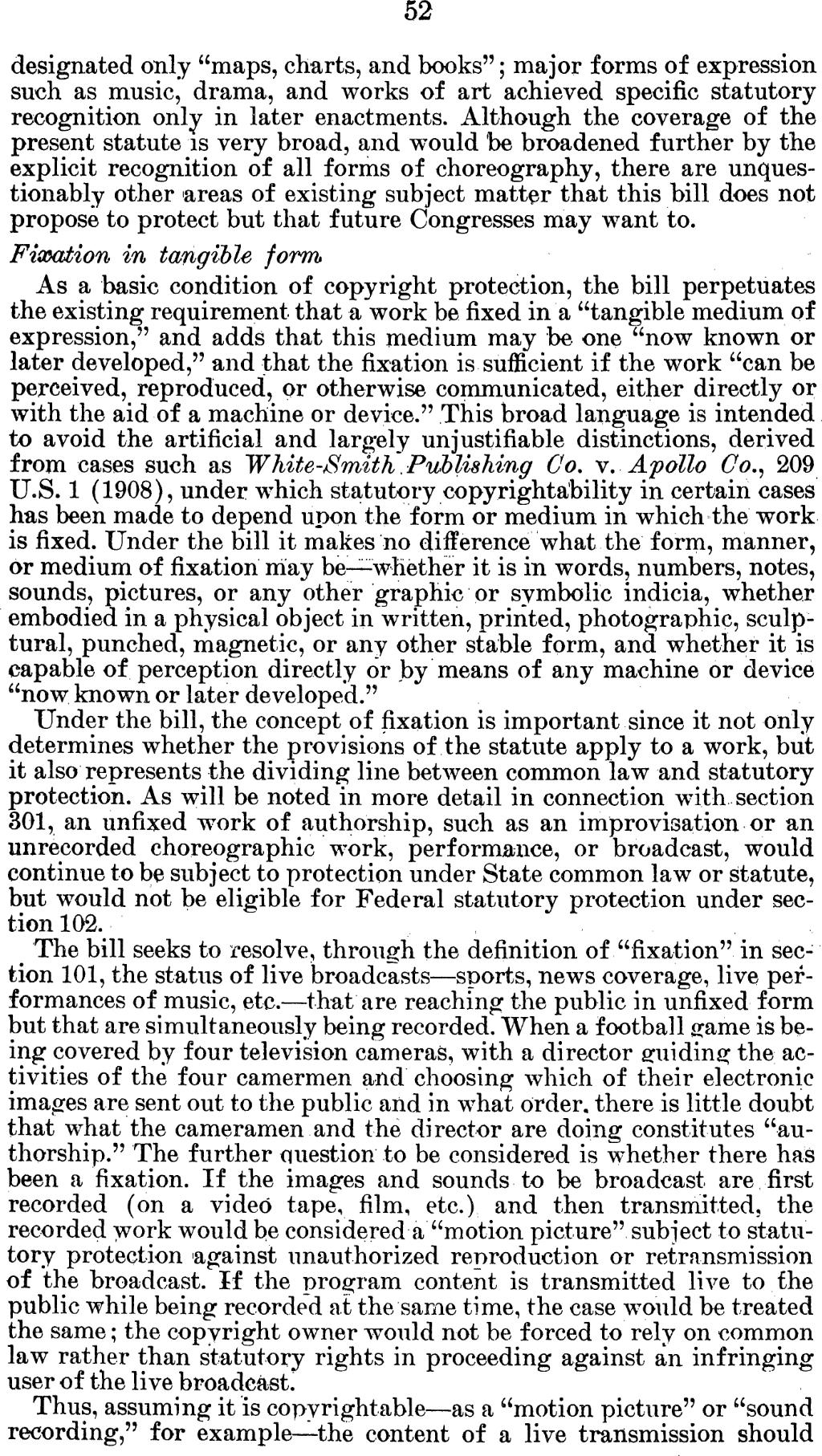52
designated only “maps, charts, and books”; major forms of expression such as music, drama, and works of art achieved specific statutory recognition only in later enactments. Although the coverage of the present statute is very broad, and would be broadened further by the explicit recognition of all forms of choreography, there are unquestionably other areas of existing subject matter that this bill does not propose to protect but that future Congresses may want to.
Fixation in tangible form
As a basic condition of copyright protection, the bill perpetuates the existing requirement that a work be fixed in a “tangible medium of expression,” and adds that this medium may be one “now known or later developed,” and that the fixation is sufficient if the work “can be perceived, reproduced, or otherwise communicated, either directly or with the aid of a machine or device.” This broad language is intended to avoid the artificial and largely unjustifiable distinctions, derived from cases such as White-Smith Publishing Co. v. Apollo Co., 209 U.S. 1 (1908), under which statutory copyrightability in certain cases has been made to depend upon the form or medium in which the work. is fixed. Under the bill it makes no difference what the form, manner, or medium of fixation may be—whether it is in words, numbers, notes, sounds, pictures, or any other graphic or symbolic indicia, whether embodied in a physical object in written, printed, photographic, sculptural, punched, magnetic, or any other stable form, and whether it is capable of perception directly or by means of any machine or device “now known or later developed.”
Under the bill, the concept of fixation is important since it not only determines whether the provisions of the statute apply to a work, but it also represents the dividing line between common law and statutory protection. As will be noted in more detail in connection with section 301, an unfixed work of authorship, such as an improvisation or an unrecorded choreographic work, performance, or broadcast, would continue to be subject to protection under State common law or statute, but would not be eligible for Federal statutory protection under section 102.
The bill seeks to resolve, through the definition of “fixation” in section 101, the status of live broadcasts—sports, news coverage, live performances of music, etc.—that are reaching the public in unfixed form but that are simultaneously being recorded. When a football game is being covered by four television cameras, with a director guiding the activities of the four camermen and choosing which of their electronic images are sent out to the public and in what order, there is little doubt that what the cameramen and the director are doing constitutes “authorship.” The further question to be considered is whether there has been a fixation. If the images and sounds to be broadcast are first recorded (on a video tape, film, etc.) and then transmitted, the recorded work would be considered a “motion picture” subject to statutory protection against unauthorized reproduction or retransmission of the broadcast. If the program content is transmitted live to the public while being recorded at the same time, the case would be treated the same; the copyright owner would not be forced to rely on common law rather than statutory rights in proceeding against an infringing user of the live broadcast.
Thus, assuming it is copyrightable—as a “motion picture” or “sound recording,” for example—the content of a live transmission should be regarded as fixed and should
